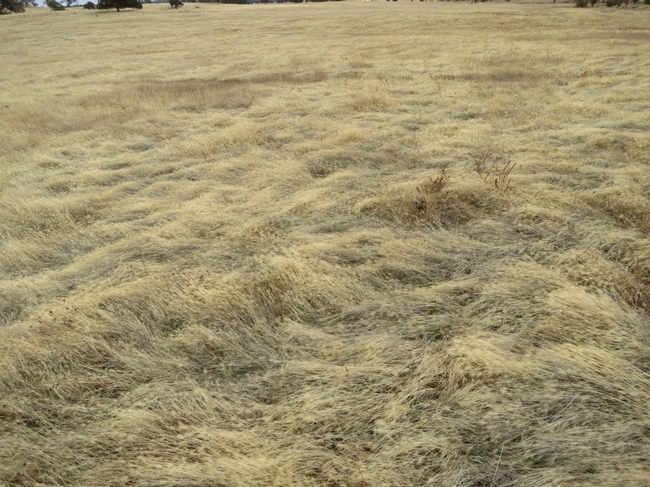Another link to the newest issue of the California Weed Science Society (CWSS) Research Update and News. (June 2013, Vol 9, Number 2).
Today I wanted to highlight the article"Research Brief on Medusahead (Taeniantherum caput-medusae) Control" by Scott Oneto (UC Farm Advisor in the Central Sierra region) and Rick Miller (Dow AgroSciences.
This article discusses the problems with medusahead with a focus on the herbicide aminopyralid. This is particularly interesting because aminopyralid and other phenoxy-type herbicides are generally considered to be primarily for control of broadleaf weeds. However, this article (and others) have shown an interesting sensitivity in medusahead - pretty cool!
Brad
Research Brief on Medusahead (Taeniantherum caput-medusae) Control
by Scott Oneto and Rick Miller
Medusahead (Taeniantherum caput-medusae) is an aggressive exotic annual grass that has become widely established throughout much of California and the Great Basin. Native to the Mediterranean region of Europe, medusahead is well adapted to the semi-arid climate predominant in California and throughout the western United States. Medusahead was first introduced into the U.S. in 1887 (George 1992, Young 1992) and rapid-ly spread throughout much of the Pacific Northwest and Great Basin. By the 1950’s medusahead had become established in California. Today it is estimated that medusahead infests over 1 million acres in California and over 5 million acres throughout the Great Basin.
Medusahead is a winter annual that dominates annual grasslands, oak woodlands, and chaparral communities. It consists of very high silica content (Bovey et al. 1961) making it a non-desirable forage for most livestock and wildlife animals. The high silica also slows the annual decomposition process resulting in an accumulation of thatch that can reach levels of 3-6 inches. The thatch acts as a weed barrier for desirable grasses and forbs, inhibiting their germination and establishment; however medusahead has no problem growing through the thick thatch layer. Overtime, medusahead creates a monotypic stand outcompeting and suppressing all other vegetation.
When it comes to controlling medusahead, much of the work over the past three decades has been on using well-timed grazing, burning, mechanical removal of thatch, and the use of herbicides (Ditomaso 2005). One of the challenges with using herbicides has been selectivity. Because of the taxonomic similarity to other more desirable grasses, achieving selective control of an exotic annual grass like medusahead in a predominantly exotic annual grassland has proven challenging.
Over the past few years, a number of researchers have examined the efficacy of aminopyralid (Milestone™) for medusahead control. Aminopyralid is a new pyridine carboxylic acid herbicide from Dow AgroSciences designed and developed specifically for use on rangeland and pastures to control noxious and invasive broad-leaf species and other problem weeds. Although it is considered a broadleaf herbicide, recent efforts have shown it to be efficacious as a pre-emergent and early post-emergent herbicide for medusahead control........ Click here for the full article in the CWSS Research Update and News.
Attached Images:
